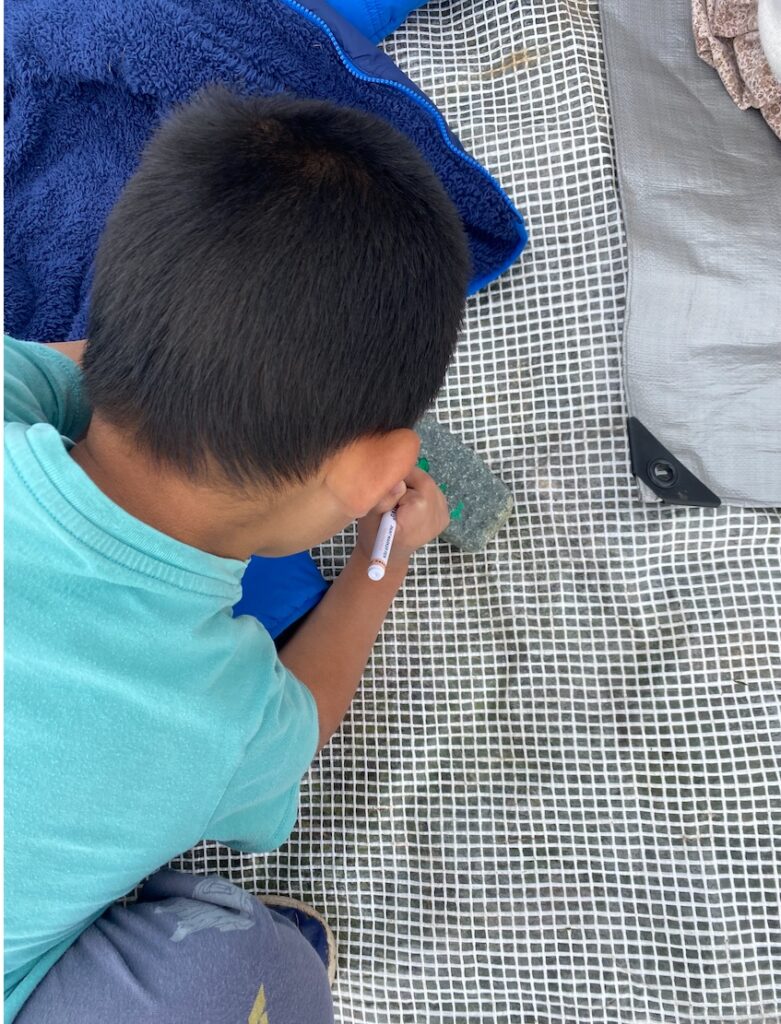Photo by Vitaly Gariev on Unsplash
Bloom’s Taxonomy Learning Objectives, Backwards Design and Understanding by Design (UbD)
By using Bloom’s Taxonomy to write focussed learning goals, you can then use Backwards Design and Understanding by Design to take these learning goals and set up accurate assessment before planning activities. I personally think it’s useful to use Backwards Design because my pedagogy is based around applying learning to students everyday lives so I’m not wasting my time and they don’t feel like they’re wasting theirs. It avoids what Josh called ‘coverage overload’ and makes learning experiences and assessments much simpler for students and teachers (Hotchin, 2025). In high school, I had one teacher who shared the learning goals for every unit we started. He then made it clear what activities and assessment opportunities there was in order to build proficiency. His classes felt easier, like I didn’t have to guess what he wanted from me. By focussing on my own learning and working hard to achieve a tangible list of goals, I was able to do well. Now, as an educator, I know that he was likely using sound learning design strategies. For example, he could have been using Bloom’s Taxonomy to write measurable learning objectives, as well as Backwards Design (or UbD) to turn those learning objectives into assessment and learning opportunities. He would also frequently do 1-1 check-ins with each student, ensuring their needs were being met and then adapted based on their concerns. This in itself reminds me a lot of the design thinking process.
Design Thinking and Inquiry and Project-Based Learning
As I mentioned in my last blog, taking a Design Thinking class through the university this semester, paired with learning how Design Thinking applies to learning design, has been helpful and complimentary. Every student in the class has unique needs. Oftentimes, teachers are able to tell what these needs are based on formative assessment and then start planning and adapting accordingly. However, what if we involved our students in this process and considered what they feel like they need in order to succeed? When in my second practicum, I had a student who was struggling with multiplication and had given up on trying. I tried incorporating his name into examples, his interests into word problems, I offered him extra work to do at home, I created a math help group in hopes he would come. Nothing worked. I finally just asked him what I could do to help him succeed because I knew he was smart, hardworking and capable of proficiency. This simple conversation changed our entire math block. Knowing I had faith in him and I had been trying to pique his interest and include him made him so much more motivated. He started coming to math help and once he discovered what he was struggling with the most, he asked me to make him specific worksheets he could take home and practice. This was a huge aha moment for me, helping me realize that our students can and should play a huge part in their own learning design.
Another way to include students in their own learning design, meet their needs, incorporate their interests, and encourage motivation is through inquiry and project based learning. Since elementary school, these have been my favourite ways to learn. The autonomy, openness and creativity of these projects are so encouraging, and I’m not the only one that shares this testamat. According to a study by Kaçar et al (2021), inquiry-based learning has a high positive effect on the academic achievement of students, reflecting the results of much of the current literature (2021). Although fun, if following UbD, teachers must make sure that these projects align with the learning goals they set out at the beginning of the process, and that they accurately asses what students have been working towards (Mctighe & Wiggins, n.d.).
Surface vs. Deep Learning
It was interesting learning about ‘learning by doing,’ ‘surface vs. deep learning,’ and ‘constructive alignment.’ I think it somewhat applies to my experience in teacher education. In many classes I have taken, you learn valuable teaching, planning, assessing, and connecting strategies. However, you learn that way by doing readings, watching videos, and listening to lectures. This is surface-level learning, requiring minimal effort and simple memorization. However, once you enter your practicum, you start the deep-learning process, requiring you to apply what you have learned, analyze if it’s working, evaluate yourself, your students and your learning environment, and you are in a constant state of critique (Hotchin, 2025). This is just the way the program is set up, and I’m not sure there’s a better way to design it. However, in some classes I took, we had to go into schools in the middle of the semester to practice what we had learned the previous week or two. For example, in our reading assessment class, we learned how to complete a running record and then had to go into a grade 1 classroom and assess a students reading using a running record. Another example is when learning how to incorporate Indigenous knowledge into outdoor physical education, we had to plan a unit on this topic and successfully teach it to a class at an elementary school the following week. These were great opportunities for us to practice deep-learning and apply our new knowledge.

Reflection
This week’s content was really interesting to me. In a previous assessment classes, I learned about a lot of the topics discussed in module 2 but on a very surface-level. As a teacher, I am always looking for ways to cut down my workload without hurting my students success and engagement. By following Backwards Design, using the UbD framework, I can ensure I am only planning, teaching, and assessing what I absolutely must in order for my students to succeed with their learning goals. This is beneficial for my students as well, as they know what to expect and can focus their learning on their objectives. By using Bloom’s and SOLO Taxonomy, I can make sure these learning objectives are clear and measurable, and I can scaffold and include multiple different learning opportunities to reach mastery. I can also make my life easier, by following the Design Thinking process and involving my students in their own learning and learning design. At the end of the day, why wouldn’t we want to work together to make everyone’s lives easier?
Sources
- Crombie, S. (2014, May 26). The Benefits of Inquiry-Based Learning. [Video]. YouTube. https://www.youtube.com/watch?v=2ylmVT5lkck
- Gariev, Vitaly (2025, September 24). Woman working on a laptop in front of a chalkboard. [Photograph]. Unsplash. https://unsplash.com/photos/woman-working-on-a-laptop-in-front-of-a-chalkboard-CBztr5_8Hso
- Hotchins, J. (2025, September 14). EDCI 335 Module 2 Video. [Video]. YouTube. https://youtu.be/ty0b2tbIpns
- Kaçar, T., Terzi, R., Arıkan, İ., & Kırıkçı, A.C. (2021, April 30). The Effect of Inquiry-Based Learning on Academic Success: A Meta-Analysis Study. ERIC: Institute of Educational Sciences. https://eric.ed.gov/?id=EJ1303939
- Mctighe, J & Wiggins, G. (n.d.). Understanding by Design Framework. WordPress. https://files.ascd.org/staticfiles/ascd/pdf/siteASCD/publications/UbD_WhitePaper0312.pdf
- Sir DYON. (2024, November 29). Bloom’s vs SOLO Taxonomy: The Ultimate Guide to Smarter Teaching and Learning! [Video]. YouTube. https://www.youtube.com/watch?v=ZbJAkGh-i1E

Leave a Reply
You must be logged in to post a comment.